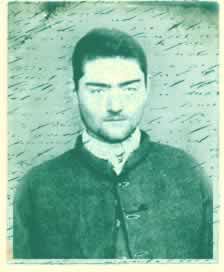The main idea: How RMIT works in with City of Melbourne planning?
Here are my notes from the discussion
Place vs. space
Space – materiality, contained, defined by objects
- Opposes set of behaviours, notion about public behaviour
- Behave – manner in the which the space dictates what you do in that space – do you study, walk, talk etc. not always just manners
- Dimension – not always walls e.g. buildings surrounding a pack could add dimension
- Material
- Intent –> Program –> Inhabitation
E.g. Place makers: farmer market at primary school, festival in laneway, music festival – blues fest
Can you have a place and no space, a space and no place?
He thinks that they are intertwined – (space and place) – how a space is activated makes it a place – Nature of program responds to place
1. The city
RMIT is “Part of a living city”
1:1000 (Scale of the city) + 1:1 (Stuff you touch) – able to plan, dictate
Spend on the money that people can touch – forget able the ceiling, computers (things you can’t touch)
I do agree, but definitely should still think about the visual aspect, not completely forget it
History of City
- Was going to be Geelong for a long time – the ships docked nicely there
- Hoddle saw where the aboriginal people were settled
The city – Unfinished project (BIG Architect) – ongoing development
- Population growth
- Seoul – 80% – 20% Rural to City – reversed in 40 years
- Australia most urbanized Cities in the world – approx. 94%
- Book – “City limits” – published by Melbourne University
- Only two books written about Australian cities in the last 20 years
- 4 of our cities – in the top 10 livable cities
- What do our cities do? –> Civic – Civitas (Romans) – how the city helps democracy
Fed square – protests for Iraq – 100,000 people – made fed square a place that was embraced – before people were just annoyed that they spent so much money on it – over 500 million for a public place
No other Australian city has a place to gather like Fed Square
RMIT – the school is open
- How do we invite the city in? Bowen Street was opened up
- Starting to look like the city – in terms of the grid – How the city organizes it self
– civic centers – organised around the CBD – parliament, church, MCG, arts centre
Grid – economic function not landscape function – so it could be divided up
How the smaller streets could be used – minor to the majors – small commerce there
Laneway culture – Meyers place 1994 – 6 degrees bar – 6 architects from Melbourne Uni couldn’t get a job – all together brought a lease
Liquor license went from $25000 –> $250, number of toilets price went down as well
2. Legibility – semiotics
Communicate these things to people
How do you get someone to behave in a civic manner?
Ability for the architect and urban planner to dictate those
How it is delivered – use of the space – research begins with careful observation not a research question – what you see and observe
Look at a way that is part of the city – how it delivers massive potential into the city – look at it not as an RMIT building but part of the city
Building 2o and Storey Hall
Building 20 – Historic – museum but it’s a private space as well
Re-writing its own story – beginning to add to its heritage – because of the things now occurring within it
Capture point of time – restore the heritage
Peter Elliot – timber, glass, – respect, to the proportions of it
A.R.M – Storey Hall – very modern but still small moments there
